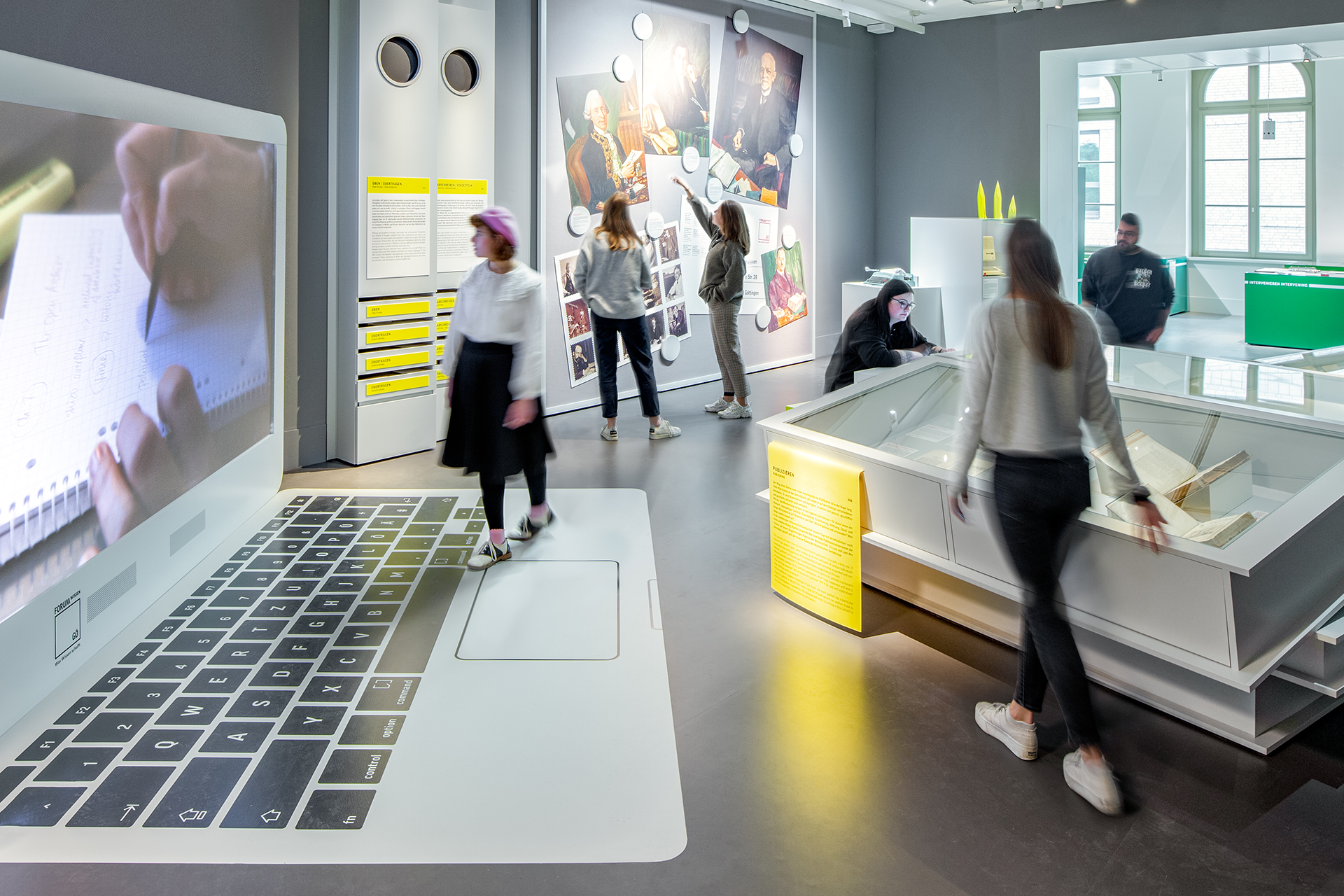The core exhibition “Spaces of Knowledge” takes a close look at science. It explores the following questions: How is knowledge actually created? Who is involved inthe process? What things, instruments and processes are being used? At Forum Wissen, the museum of the University of Göttingen, visitors can explore how knowledge is created.
The Forum Wissen App provides valuable additional information on the entire core exhibition such as sound tracks highlighting different perspectives on some of the objects on display.
Exhibition texts: German/English | App and media stations: German, English, easy language, German sign language
The Prologue Rooms
In the first three exhibition rooms, three basic principles are introduced that will accompany visitors through all subsequent rooms: Perspectives, Practices and Connections.

Perspectives
Right from the start, visitors are invited to change their perspectives. For in science, too, it is a matter of viewpoints, positions and perspectives. They are influenced by historical, social, political and cultural factors. Who is speaking? Who is being listened to? And who is not?

Practices
Academic work is not just brain work. Scientific knowledge also relies on craft knowledge and skills as well as everyday routines. Thus, a variety of practices contribute to creating new knowledge at the university.

Connections
By connections we understand the fact that knowledge is created in geopolitical contexts that link people and things. This is illustrated by selected objects that have passed through different hands and times, for different purposes, with far-reaching consequences for the production of scientific knowledge.
The 12 Spaces of Knowledge
In twelve uniquely designed “Spaces of knowledge” over 1,400 objects from the university’s diverse collections are on display: from living algae and antiquities to a historic land surveying instrument and the centrifuge.

The Museum
In the museum, knowledge is imparted by displaying objects. Exhibits from the Royal Academic Museum, founded in 1773, show how things change their function and become showpieces and objects of knowledge. What is collected and exhibited? Who makes the selection?

Cabinets
Cabinets, boxes and drawers help to create order. This order helps to create knowledge and bring it into a system. But it can also create hierarchies and fuel racism.

The Laboratory
In the laboratory, the focus lies on the experiment. Controlled conditions are created here in order to be able to compare data collected. Laboratory and measuring instruments present practices from different laboratories. You can experience it hands-on.

The Field
If you want to explore people, animals or natural phenomena in as natural an environment as possible, you have to leave your desk. Discover past and present field research practices in this room.

The Desk
At the desk, ideas are put down on paper, they are organised and prepared for publication. A huge walk-in desk invites you to explore different writing practices.

The Studio
In the midst of an abundance of images and objects, different methods of visualisation can be compared. What becomes visible? What remains invisible?

The Salon
There is room for discussion in the salon. Here, contentious issues are negotiated that concern not only science, but also the general public. A sound installation by the Berlin performance group Rimini-Protokoll invites people to take a stand.

The Auditorium
In the auditorium, the focus is on teaching and learning, but also on the professors and how they present themselves. Who is allowed to give lectures? What role do gestures, facial expressions and language play?

The Workshop
Knowledge is often created in teams of researchers and artisans and craftspeople In the workshop, visitors can learn about the crafts of taxidermy, precision mechanics and restoration using selected examples and experience it hands-on.

The Blind Alley
Experiments can fail, hypotheses can be disproved. That, too, is part of knowledge creation. The blind alley introduces the principle of trial and error. Stories of failure are collected here, which can also lead to new insights.

The Market
On the market, knowledge becomes a commodity. Which products prove successful? What increases the scientific market value? Several Göttingen innovations are presented in this room. The exhibits you have collected in the App can be traded on a media table.

The Library
In the library, knowledge is collected and made available in the form of books – nowadays also digitally. A walk-in tower of books invites you to discover hidden knowledge.